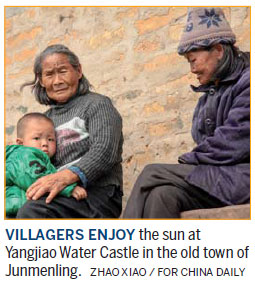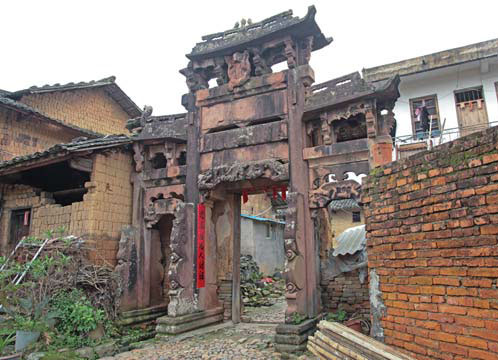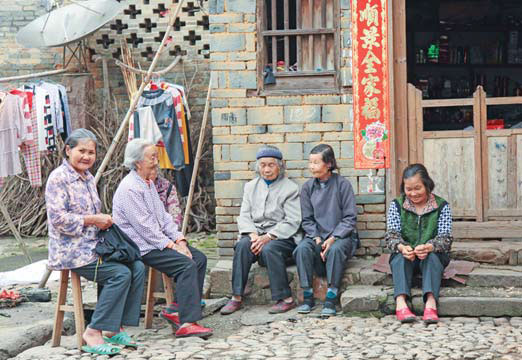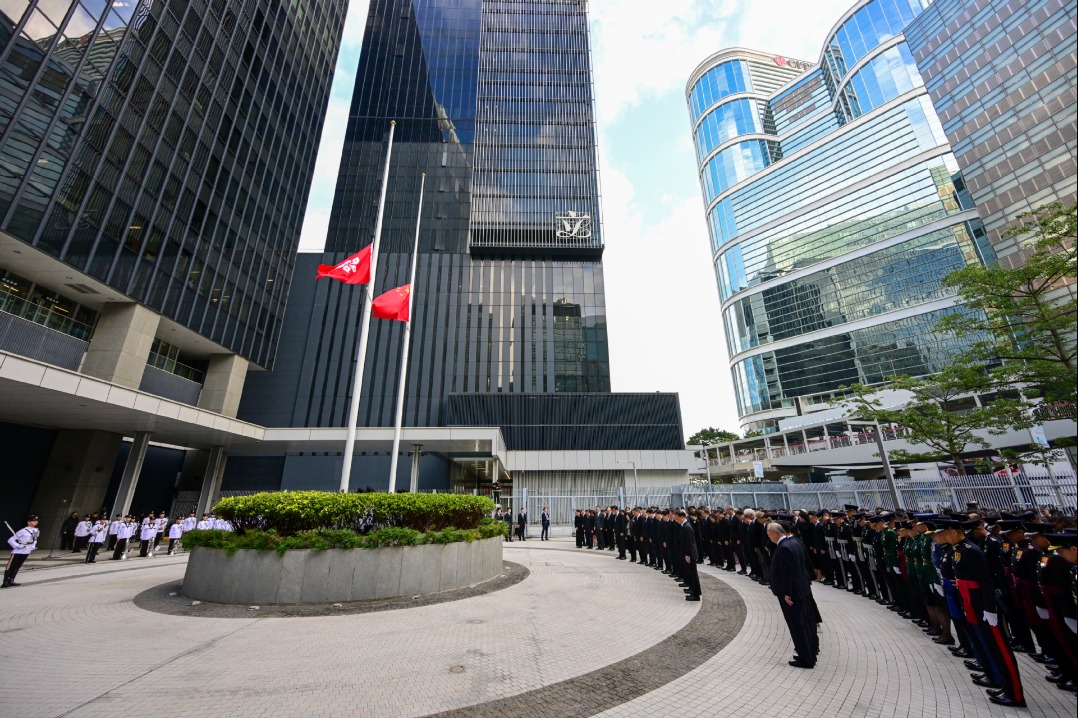County believes tourism is key to prosperity

Editor's note: For many foreigners traveling in China for the first time, the country's sheer size and uneven development can be both baffling and bewildering. The world's second-largest economy boasts a per capita GDP of $8,000, yet at least 70 million people are still living in absolute poverty, earning less than the official poverty line of 2,300 yuan ($350; 309 euros) a year.
The central government wants all those living in China to at least have adequate food and clothing, as well as access to education, basic medical services and housing. The money and manpower mobilized for this endeavor must target those in need. Like many government agencies, organizations and businesses in Beijing and beyond, China Daily has also been engaged in this poverty-relief campaign over the years.
We have sent members of our staff to Dongxiang county in Northwest China's Gansu province, and Huichang county in East China's Jiangxi province. These two regions are among the most vulnerable to the specter of poverty. We have helped them carry out development projects and train teachers for local schools. But most often, we've dispatched teams of reporters to tell the stories of the grassroots. These reporters spend several weeks in a county with farmers, chronicling their everyday life and how the local cadres help the residents lift themselves out of poverty.
| A panaromic view of Huichang county in Jiangxi province. Li Jianping / For China Daily |
Achance to experience life in a castle built nearly 550 years ago, an excursion to rugged mountain vistas in the pristine air, and a glimpse of a vibrant county striving to break free of poverty. This is what Huichang, Jiangxi province, promises visitors - a haven for curious tourists who are tired of the crowds.
It's said the county got its name in 982 during the Northern Song Dynasty (960-1127), when locals unearthed an ancient brick bearing the characters for huichang (literally: will prosper) while digging a well.
More than 1,000 years later, Huichang has seen some prosperity. The income of its farmers rose 14 percent last year, and most residents now own at least one cellphone. But the county, which at 2,700 square kilometers is roughly the same size as urban Miami, seems not to have fully lived up to the expectations of those who named it.
For one, it has yet to lift 47,000 people - about 10 percent of its population - out of poverty. These people, many of whom are illiterate, live below the poverty line.
However, under the national poverty relief program, Huichang is entitled to a slew of preferential policies and financial support for its development projects, which are designed to help lift everyone here out of poverty by 2020.
The county sits at the confluence of two waterways that form the Ganjiang River, a principal southern tributary of the Yangtze River and the lifeline of Jiangxi. In ancient times, people from northern China used these rivers to travel as far as Junmenling, a mountainous town in southern Huichang that serves as a gateway to neighboring Fujian and Guangdong provinces.
At least 95 percent of Huichang's population comes from the Hakka ethnic group, one of the highest concentrations in the country. Hakka is the Cantonese pronunciation of the Mandarin word kejia (literally: guest people). Fittingly, a census in 1990 found the occupants of Junmengling were descendants of settlers from at least 11 provinces throughout China.
Legend has it that a foreign letter sent to the town during the War of Resistance Against Japanese Aggression (1937-45) needed only to be addressed to "China Junmenling" because it was so well known for its salt and rice ventures with overseas business links.
Today, it is known among tourists for its historic castle and the scenic Hanxianyan area. Construction of Yangjiao Water Castle, at the headwaters of the Gongjiang River, one of the waterways that form Ganjiang River, began in 1465, while work on a 10-meter-high wall encircling the castle started in 1543. Upon its completion, nearly 1,000 farming households were relocated to live inside the wall, ready to defend the castle during times of unrest.
It is said that all the dwellers in the castle had the same family name, Zhou, and there are still people living in it today.

Zeng Lingzhen, director of Huichang's tourism office, says the government has spent millions of yuan to restore parts of the castle.
A short walk away is Hanxianyan scenic area, where wooded mountains act as a kind of open-air museum for ancient carvings and calligraphic inscriptions, made on the cliffs by monks, officials and men of letters from days long past.
One inscription, which translates as "Precipice rising steeply like a tall wall", was engraved in the rock 6 meters off the ground, with each character 2.3 meters high.
Junmenling is one of the 19 towns in Huichang, which also has 319 rivers and waterways stretching a panorama of valleys and hills, according to the tourism office. Each district can lay claim to its own unique draw, with some even related to modern Chinese history.
Mao Zedong, the founder of the People's Republic of China, lived in Huichang for a month, and in 1934 climbed Mount Huichang, writing a poem proclaiming that "the scenery here is uniquely good".
Deng Xiaoping also served as a top official in Huichang for 10 months in the 1930s. Both Mao and Deng's former residences still stand for visitors to see today.
Other tourism draws relate to folk customs, with picturesque villages offering an experience of genuine Hakka culture - their worship of Laigong, the guardian of happiness and safety, and their array of cuisine and beverages.
Economically, Huichang's most important resources are its abundant reserves of tin, rock salt, rare earth and fluorite, which it hopes to exploit through the development of chemical and other industries to help lift the remaining poor out of the poverty.
"Huichang is the only place in the world that boasts both rock salt and fluorite, a blessing for the county to develop chemical industries," says Cai Xiaowei, a top official in Huichang, who adds that targeted measures are being take to help poor families.
zhaohuanxin@chinadaily.com.cn
| A stone archway at Yangjiao Water Castle. Zhao Xiao / For China Daily |
| Villagers chat in the castle's courtyard. Zhao Xiao / For China Daily |
(China Daily European Weekly 06/24/2016 page1)
Today's Top News
- Takaichi must stop rubbing salt in wounds, retract Taiwan remarks
- Millions vie for civil service jobs
- Chinese landmark trade corridor handles over 5m TEUs
- China holds first national civil service exam since raising eligibility age cap
- Xi's article on CPC self-reform to be published
- Xi stresses improving long-term mechanisms for cyberspace governance

































